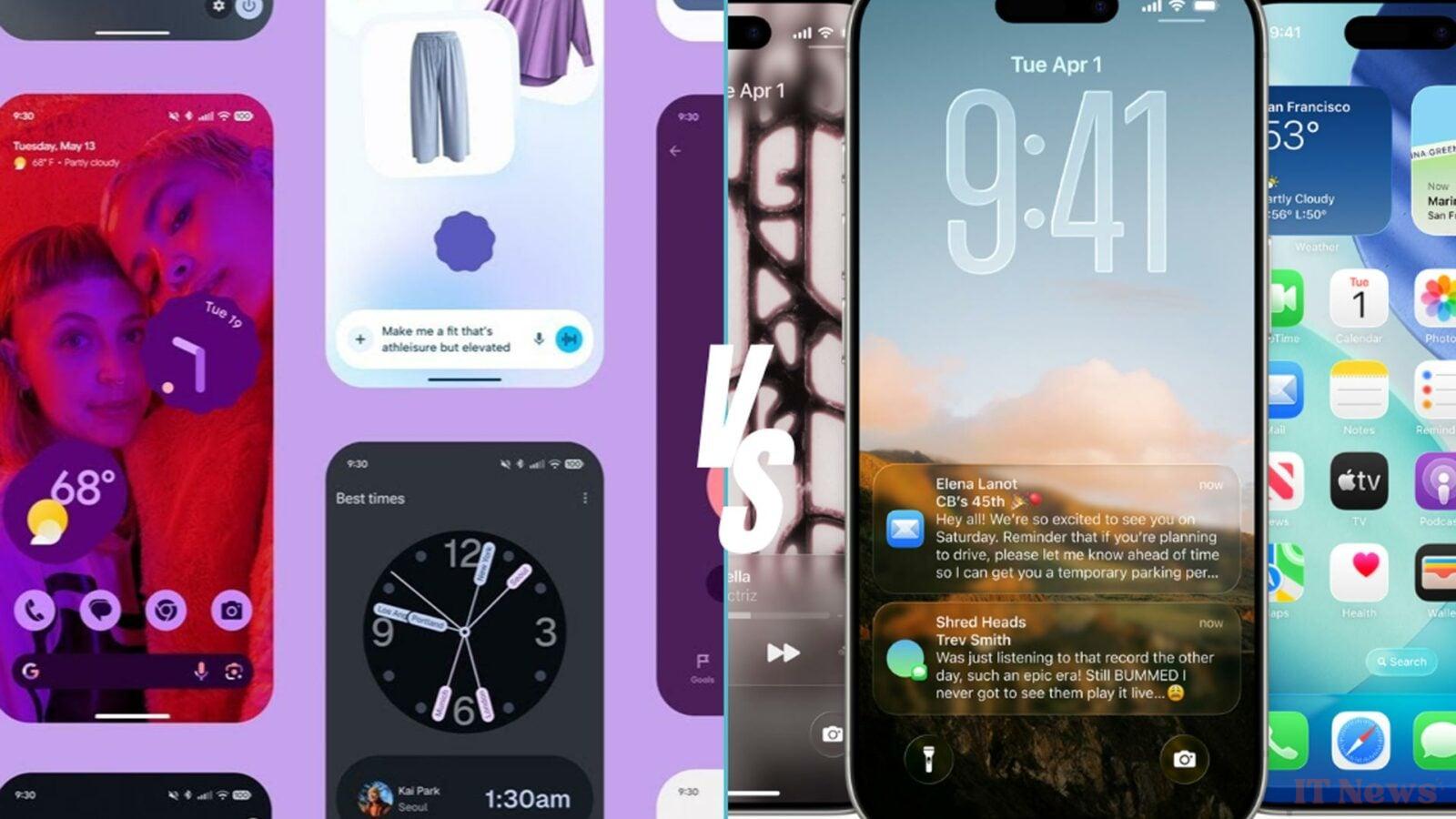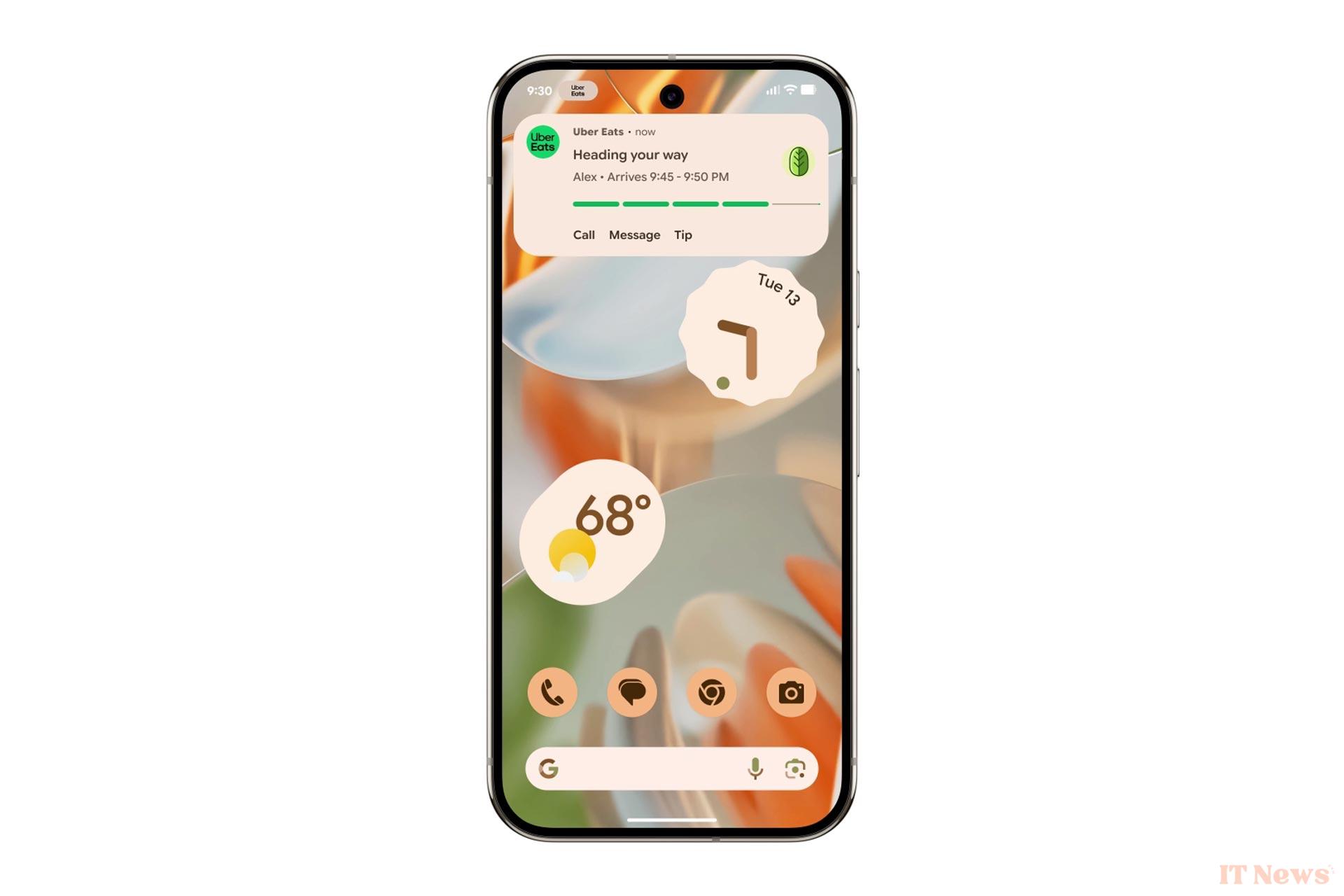June 2025 marks a turning point for smartphone users with the simultaneous arrival of Android 16 and the iOS 26 beta. Two different worlds, two different philosophies, but the same ambition to modernize the mobile experience to make it more intuitive, secure, and immersive. While Google and Apple remain competitors, their updates reveal that the two operating systems are closer than ever, particularly in terms of interface, security, and artificial intelligence.
The interface: a shared revolution
It is undoubtedly in the evolution of the interface that the convergence between Android and iOS is most striking. Android 16 launches Material 3 Expressive, a major overhaul that promises a more fluid, colorful, and personalized experience. Animations are more natural, typography has been revisited, and a dynamic color system applies to all Google applications. Notifications become animated and interactive, and real-time updates are constantly displayed on the lock screen.
This is far from a trivial change of look for the Mountain View giant, which wants to make Android more attractive. Praised since its inception for its numerous customization options, Google's operating system may lack personality compared to its eternal rival, Apple's iOS. To design its new Material 3 Expressive interface, Google engaged 18,000 users and conducted 46 research cycles. The ambition is to provoke more emotions in users, which could particularly appeal to a new audience and younger users.
iOS 26, for its part, revolutionizes design with Liquid Glass, a world of transparency and glass effects, inspired by the VisionOS interface of the Vision Pro headset. Interface elements become translucent, animations become more fluid, and the system offers unprecedented depth. The home screen and icons adopt a transparent glass effect, while the lock screen dynamically adapts to notifications and current music.
Security: a shared priority
Security is a central focus of both systems. Android 16 unveils its Advanced Protection mode, a true shield that disables several potential attack vectors, such as 2G connection or unsecured USB access. Apple, for its part, takes a further step with iOS 26's Call Filtering, which prompts unknown callers to identify themselves before the user decides to answer.
Notifications: smarter, more personalized
Notification management is also receiving special attention. Android 16 automatically groups alerts from the same application and offers real-time updates, particularly for deliveries or journeys. iOS 26, meanwhile, focuses on design with its new Liquid Glass style, while keeping the bar high on the customization and ergonomics of alerts. Here again, we find two slightly different visions, but the same desire to make notification management less intrusive and more intuitive.
Accessibility and artificial intelligence: the future of mobile
Accessibility and artificial intelligence are at the heart of the modernization of both systems. Android 16 improves the integration of hearing aids, allowing you to use the phone's microphone or adjust settings directly from the system. iOS 26, meanwhile, deploys new artificial intelligence tools, dubbed Apple Intelligence, to offer real-time translation of calls and messages, as well as advanced visual recognition in screenshots.
The Apple brand also integrates the Call Waiting Assistance feature, which notifies the user when their caller is available. These are new features that Google already offers on Pixel smartphones, something the company did not fail to point out. In a video from its #BestPhonesForever series, Google gently mocks its rival by showing an iPhone and a Pixel 9 Pro talking.
The search giant's device reminds Apple that it has already offered features like Live Translate, Call Screening, and Call Waiting Assistance for years on Pixel devices. Specifically, call screening appeared in 2018 on the Pixel 3, while the call waiting feature has been available since 2020. Finally, a translation function has existed since the arrival of the Pixel 6 in 2021.
When it comes to "home" assistants, Google is way ahead with the presence of Gemini on Android devices. The AI-powered Siri, meanwhile, won't be available on Apple products until 2026.




0 Comments